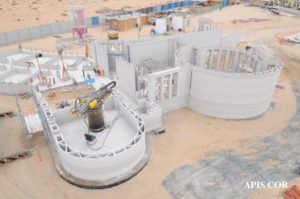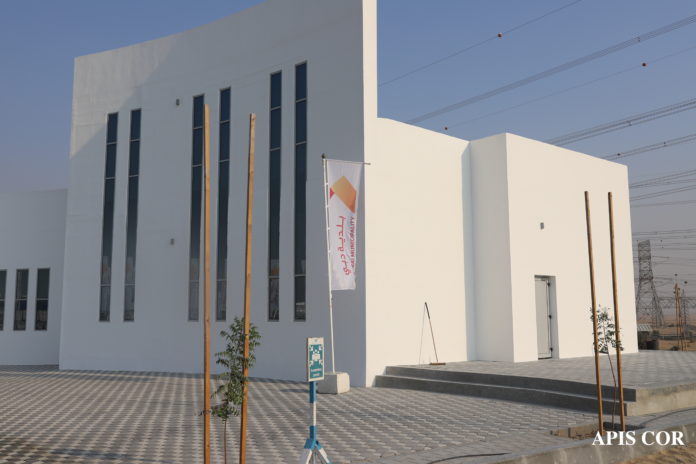Apis Cor has recently collaborated with Dubaï Municipality for the construction of a two-storey building. The specialist of Construction 3D Printing leverages its 3D printing technology to achieve the project.
 The project is achieved in Warsan, a municipality acknowledged for its industrial activities. It took one year to Apis Cor’s team to meet the Emirate’s demanding building requirements. A year of extensive R&D dedicated to testing the equipment under harsh climatic conditions and developing the 3D printing material.
The project is achieved in Warsan, a municipality acknowledged for its industrial activities. It took one year to Apis Cor’s team to meet the Emirate’s demanding building requirements. A year of extensive R&D dedicated to testing the equipment under harsh climatic conditions and developing the 3D printing material.
As a reminder, in a previous issue of 3D ADEPT Mag dedicated to 3D printing in construction, experts explained that when a building has to be 3D printed in situ, the technological company in charge of the construction has to conduct extensive research on the 3D printing materials compatible with the construction environment. That’s one of the major differences with other types of 3D printing processes that do not require a specific analysis of the environment prior to manufacturing.
In this specific case, Apis Cor worked in an uncovered area and the team had to deal with temperature and humidity issues in the environment. Indeed, those two elements cannot be controlled in such a critical environment.
“Thanks to unique design of Apis Cor’s 3D printer the structure of the building was built directly on-site without any extra assembly works. The total area of the building is 640 sq. meters, which is larger than the printing area accessible when the Apis Cor’s 3D printer is stationary. However, the Apis Cor 3D printer is mobile and was moved around the construction site by crane”, said Apis Cor on its website.
Apis Cor 3D printing technology
 Apis Cor’s 3D printing process proceeds with a layer-by-layer approach, just like an FDM technology. In this case, a fluid material is deposited along a predetermined route mapped pre-determined by a computer. The material solidifies into concrete almost instantly to convert the digital model into a 3D component.
Apis Cor’s 3D printing process proceeds with a layer-by-layer approach, just like an FDM technology. In this case, a fluid material is deposited along a predetermined route mapped pre-determined by a computer. The material solidifies into concrete almost instantly to convert the digital model into a 3D component.
“This two-storey building has been designed and executed with a number of spaces that can be used as rooms or offices,” said Mr Hajri at an opening event to discuss the project in Warsan.
“The walls are printed directly from the printer, unlike the traditional method of construction, which depends on the work of tightening wooden pieces with nuts and bolts, reinforcement and pouring of concrete and making bricks.”
According to authorities, construction costs for such a building would be cut from about Dh2.5 million ( € 233,097.83) to less than Dh1m (€ 93,233.00).
You can now post free of charge job opportunities in the AM Industry on 3D ADEPT Media. For further information about 3D Printing, follow us on our social networks and subscribe to our newsletter : Facebook, Twitter, LinkedIn & Instagram !Would you like to be featured in the next issue of our digital magazine? Send us an email at contact@3dadept.com






